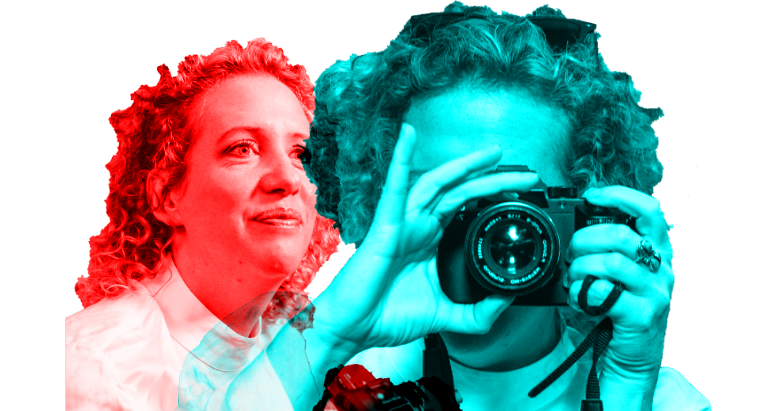Mia Collis and René Solomon Light Up The Darkroom | iN FOCUS
TUNE iN | Listen to the Podcast with Mia and Rene
iN TV | Watch the Web Series with Mia and Rene
Born and raised in Nairobi, Mia Collis is immersed in a world where art has shaped a narrative and created a dialogue for her interpretation of identity. Her photography has gained global acclaim and been featured in countless international publications; she recently won first prize in the People category of National Geographic’s 2018 photo contest.
[sp_wpcarousel id=”764″]René Solomon is a rising star in Nairobi’s photography scene. His work was selected for the Mo Ibrahim Foundation’s “Africa at 50” gallery, and his work has featured in multiple policy research articles for the Seychelles’ Ministry of Family Affairs. Mia and and René sat down over drinks — talks over first photos, foreign photographers in Kenya, the photography hustle, capturing black and white skin, and advice for the next generation led to an inspired exchange. (Edited for brevity and clarity.)
Read the full interview below and check out the web series here
ON THAT FIRST PHOTO
RENE My first photo was of my brother running out of the bathroom — it had his little bum. It was shot on a Kodak KB 10 — the old flash point-and-shoot type thing. I was seven — I had asked for a camera for Christmas and I took the photo and forgot about it. And when we went to develop the film, they were like, “what is this?” and it was just a very happy, happy photo. I think I still have it.
MIA I was at boarding school. Having just arrived in England, I was miserable. The school offered this photography class. They gave us all cameras, and all the kids shot a picture. And then we came back, and the teacher developed [them]. He got this one shot, and he was like, “Whose shot is this?” And it was the shot that I took. He was like, “I think this is a really nice shot, the whole class is going to go into the darkroom and develop this shot.” What it, just that tiny little thing, gave me was the first warm feeling that I’d had. It’s amazing what teachers can do.
ON FOREIGN PHOTOGRAPHERS IN KENYA
MIA [Responding to Khadija Farah’s Tweet about hanging up her camera and foreign photographers in Kenya] I felt, “oh goodness, that’s so sad” because she’s really good. And my initial thought was photography, right now, is a hustle, because there is more and more competition, everybody wants it, and yes, there are these international photographers that are coming in and doing essentially what she [we] could do, literally, off the top of her head.
RENE About external photographers coming in, as expats or “working” on visitors’ visas — and drawing this contrast between them and what it’s like to be a professional photographer in Kenya, because I think of the same fatigue I have felt: you only have events, or you’re doing product, or you’re doing fashion. But when it comes down to telling our own stories, where do we place ourselves to create narratives in a way that’s meaningful for us?
Luck is like the wind that’s blowing constantly. It’s always there, and it’s for you to harness it. – Mia
RENE I think anyone doing anything on the continent should count as “African” photography. I think anyone telling a story that feels African is African photography. What is “African,” what is not? I think it’s time for us to open up the field and accept all kinds of narratives that have been shared, images that have been shared, and take that as is — let people tell their stories.
ON INSPIRATION
RENE Joshua Kissi, out of Ghana. Yagazie Emezi — Liberian, currently living in Nigeria, and pushing a narrative with a very gritty, very spectacular style. Kissi is doing a lot of work in the diaspora, whereas Yagazie is doing a lot of work on sexuality and the changing landscape of identity and how that might affect people’s different lives. We have a unique opportunity to tell our own stories, with ownership.
ON THE HUSTLE
MIA It starts with passion — you have to have inspiration. It’s a hustle — for sure. Like my bread and butter is a hustle. But then my passion project is the Weekend Studio, this one in Kibera. It was a total passion project. I literally self-funded 100% for a year.
RENE As an up-and-coming photographer, the hardest thing I’m facing is building a portfolio. You’re reached out to by corporations, by people who want wedding photos — but it seems like there are already professionals there who have carved their niche and their pricing. I’m facing the issue of finding where my art meets a career. Crossing into spaces where your career is photography and simultaneously being able to use this medium as an art form and as an avenue of expression is challenging.
ON SHOOTING BLACK & WHITE SKIN
RENE It’s easy to shoot white skin simply because of the way the light is captured. The “Insecure” director and director of photography went really in depth into what it’s like to shoot for black skin, talking about playing with different colour that reflects beautifully off of black skin. The sun is lovely, blue light is lovely — you have a range of tones to explore but also to contrast with. So you need to think more intentionally about the outfits and the backdrops.
MIA I have a problem with it, having to expose for two different colour skins. And so I will go for the medium in a very technical way, go for the medium range, and then increase the shadows and decrease the highlight in Lightroom. I actually prefer to photograph black skin. I just think it’s easier and richer and beautiful.
ONTO ADVICE FOR THE NEXT GENERATION
MIA I suppose three things. One is technical, one emotional, and one more on a conscious level. The technical side would be to walk into any space that you want to shoot and clock the light from the moment you walk in — where it’s falling, where it’s heading, what it’s lying on, how it’s dimming someone’s face, how it’s just dancing on a wall — and then get the story of that. That is when the beauty comes in.
Then the emotional side — it comes from a Magnum and National Geographic photographer called David Alan Harvey. And he says, “Don’t shoot what you see. Shoot what is felt within the room.” So have empathy, walk into a room and clock the emotions. Don’t photograph the face, photograph the sadness — whatever that person is going through, shoot the feeling.
And the final one is a consciousness in photography — a lot of photographers feel that it’s all about luck and that luck is like a lightning bolt that is going to hit you. But actually — there is this incredible woman at Stanford University called Tina Seelig who articulates it very well. And she says, “luck isn’t a lightning strike that is just going to hit you in one go. It’s like the wind that’s blowing constantly. It’s always there, and it’s for you to harness it.” So you have to jump on that. And you have to notice it. And it’s constantly there.
Keep up with Mia & René:
IG @mia_collis | miacollis.com
IG @see.through.solomon | seethroughsolomon.com
Watch the full series on iNTV NOW
Listen to the full interviews on TUNEiN



